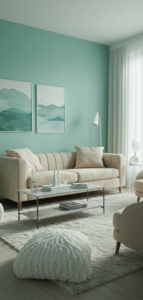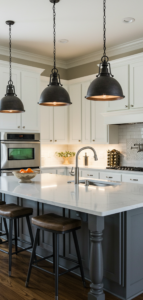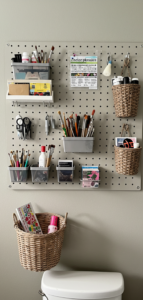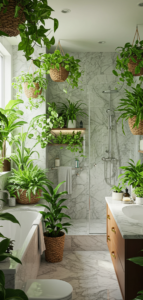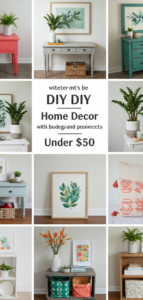Creating a nursery that is both charming and functional can feel like a monumental task, especially when trying to strike a balance between aesthetics and practicality. Gender-neutral themes are increasingly popular, allowing for flexibility and creativity without the constraints of traditional pinks or blues. Imagine walking into a beautifully decorated space filled with soft pastels, whimsical patterns, and cozy textures—a sanctuary that promotes comfort and joy for both parents and their little ones.
Jump to:
- <strong>1. Embrace Nature-Inspired Themes</strong>
- <strong>2. Explore Whimsical Patterns</strong>
- <strong>3. Incorporate Soft Textures</strong>
- <strong>4. Functional Storage Solutions</strong>
- <strong>5. Safety First</strong>: Secure Furniture
- <strong>6. Choose Non-Toxic Materials</strong>
- <strong>7. Lighting Matters</strong>
- <strong>8. Personalize With Keepsakes</strong>
- <strong>9. Create Cozy Nooks</strong>
- <strong>10. Plan for Growth</strong>
- <strong>FAQ</strong>
As you embark on this exciting journey of nursery decor, remember that every choice you make not only shapes the visual appeal but also contributes to the safety and functionality of the space. From selecting storage solutions to ensuring everything is secure for tiny explorers, this guide will help you navigate through various gender-neutral themes while offering valuable tips on storage and safety, making your nursery a harmonious haven.
1. Embrace Nature-Inspired Themes

When we decorated our nursery with a nature-inspired theme, it transformed into a peaceful oasis. Friends commented on how calming it felt, with soft greens and earthy tones setting the mood for relaxation, making those late-night feedings more bearable.
Opting for a nature-inspired theme can create a serene environment that resonates with tranquility. Think forest greens, gentle browns, and soft yellows reminiscent of sunbeams filtering through leaves. Incorporate elements like animal motifs or botanical prints in wall art or bedding to enhance the natural feel. This theme provides an inviting atmosphere while remaining gender-neutral—perfect for welcoming any little adventurer.
2. Explore Whimsical Patterns

I remember my sister’s reaction when she saw our whimsical nursery filled with playful patterns; her eyes lit up as she noticed the clouds and stars dancing on the walls. It made her nostalgic about her own childhood!
Whimsical patterns can add an element of fun without leaning towards traditional gender-specific designs. Consider using playful wallpapers or decals featuring clouds, stars, or friendly animals. Mixing different patterns—like stripes with polka dots—can create a lively space that sparks imagination while still being visually appealing and soothing for sleep times.
3. Incorporate Soft Textures

Choosing soft textures was one of our best decisions during the nursery setup; my husband couldn’t stop touching the plush rugs and fluffy blankets! It created an inviting space where we loved spending time together with our newborn.
Textures play a significant role in creating warmth in your nursery decor. Opt for plush rugs, soft curtains, and cozy bedding materials to invite touch and comfort into the space. Layering different fabrics enhances visual interest while providing sensory-rich experiences for your baby as they grow. This tactile variety not only makes the room cozy but also encourages exploration through touch.
4. Functional Storage Solutions

When I first organized our baby’s toys in stylish baskets, my friends were impressed by how tidy yet chic everything looked! It turned out to be practical too since we could easily find what we needed during playtime.
Storage is crucial in any nursery, especially as toys and baby gear tend to accumulate quickly. Look for multifunctional furniture pieces such as cribs with built-in drawers or ottomans that double as storage bins. Use decorative baskets or boxes to keep toys organized while adding charm to your decor. This way, you’ll maintain a tidy environment that’s easy to manage day-to-day.
5. Safety First: Secure Furniture

While setting up our nursery, I vividly recall securing all heavy furniture against the walls; I didn’t want anything tipping over during those curious toddler years when everything becomes a climbing challenge!
Safety should always be your top priority when decorating your little one’s space. Ensure all heavy furniture pieces are anchored securely to the wall to prevent tipping accidents as your child starts exploring their surroundings. Additionally, opt for rounded furniture edges where possible and regularly check items like cribs or changing tables for any loose screws or wear that may arise over time.
6. Choose Non-Toxic Materials

After learning about non-toxic materials during our nursery preparation phase, I realized how important it was; knowing my baby would be safe from harmful chemicals added immense peace of mind!
Selecting non-toxic materials is essential when creating a healthy environment for your child. Always look for paints labeled low-VOC (volatile organic compounds) to minimize harmful emissions in the air you’ll breathe together. When purchasing furniture or textiles, ensure they’re certified free from harmful chemicals like formaldehyde or flame retardants—this commitment fosters overall well-being in your home.
7. Lighting Matters

Setting up soft lighting was crucial; I fondly remember those midnight feedings illuminated by gentle glows instead of harsh lights! It created such warm moments between me and my baby during those quiet hours together.
Lighting plays a vital role in establishing ambiance within your nursery while facilitating nighttime routines seamlessly. Choose dimmable lighting options or add nightlights that emit soft glows to create calming atmospheres conducive to sleep while still providing enough brightness for nighttime changes or feedings without startling baby awake completely!
8. Personalize With Keepsakes

When we hung up framed photographs from our family trips around our baby’s crib area, it sparked conversation among guests; everyone enjoyed sharing memories from those adventures! It turned out beautiful while keeping us connected even when away from home.
Personalization can make your baby’s space feel unique and cherished right from the start! Incorporate meaningful keepsakes such as family photos displayed on shelves or personalized artwork featuring their name above their crib area—it adds warmth while creating emotional connections fostering familiarity within their surroundings!
9. Create Cozy Nooks

I fondly remember constructing our cozy reading nook tucked away by sunny windows; it became our favorite spot during lazy afternoons spent flipping through picture books together—a cherished memory forever etched in my heart!
Designing cozy nooks provides inviting spaces perfect for reading stories aloud or snuggling up with your little one after long days filled with adventures! Choose comfortable seating options alongside small bookshelves stocked full of engaging literature accessible at their level—this encourages early literacy skills while creating special bonding moments shared between parent-child time!
10. Plan for Growth
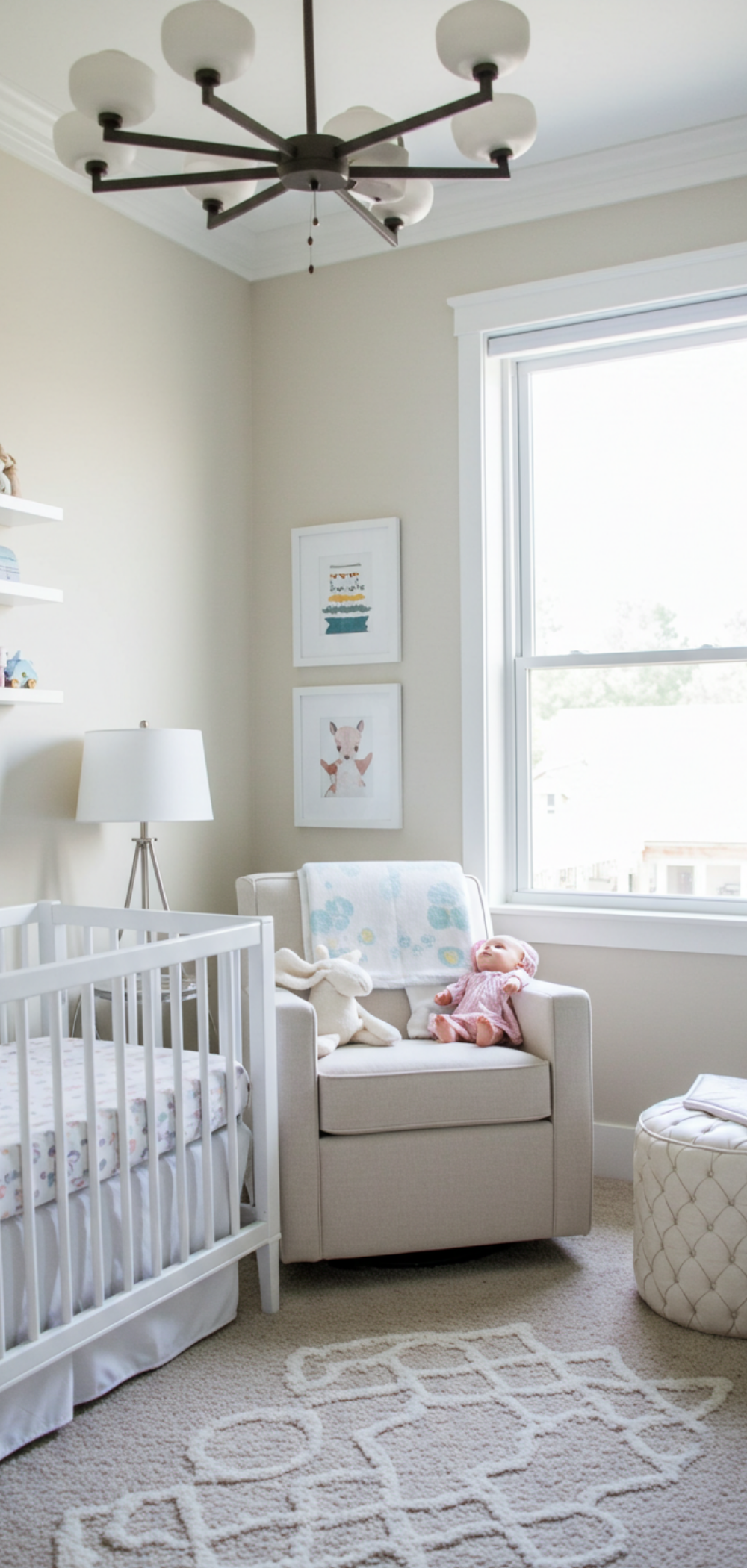
When designing our nursery layout initially focused solely on infancy needs, we soon realized planning ahead was essential; watching our little one grow into new stages would require flexible spaces adaptable along each developmental milestone!
Always consider growth potential within any design choices made early on so adjustments remain effortless later down life’s road! Investing in convertible furniture pieces—like cribs transitioning into toddler beds—can save money long-term whilst minimizing future redecorating efforts required periodically throughout childhood phases down the line!
FAQ
What are some popular gender-neutral color schemes?
Many parents opt for colors like mint green, pale yellow, soft gray, or warm beige as popular gender-neutral choices that create soothing environments suitable across various themes without being overly defined by traditional gender norms.
How can I ensure my baby’s safety while decorating?
To ensure safety during decoration processes focus on securing heavy furniture against walls properly using anchors; choose non-toxic materials carefully vetted before purchase ensuring no harmful chemicals present within selected items throughout child’s living spaces.
What storage solutions work best for small nurseries?
For smaller nurseries utilize multi-functional furniture options such as cribs with built-in drawers alongside vertical shelving units maximizing floor space effectively allowing ample organization opportunities without overcrowding limited areas available within confined environments.

